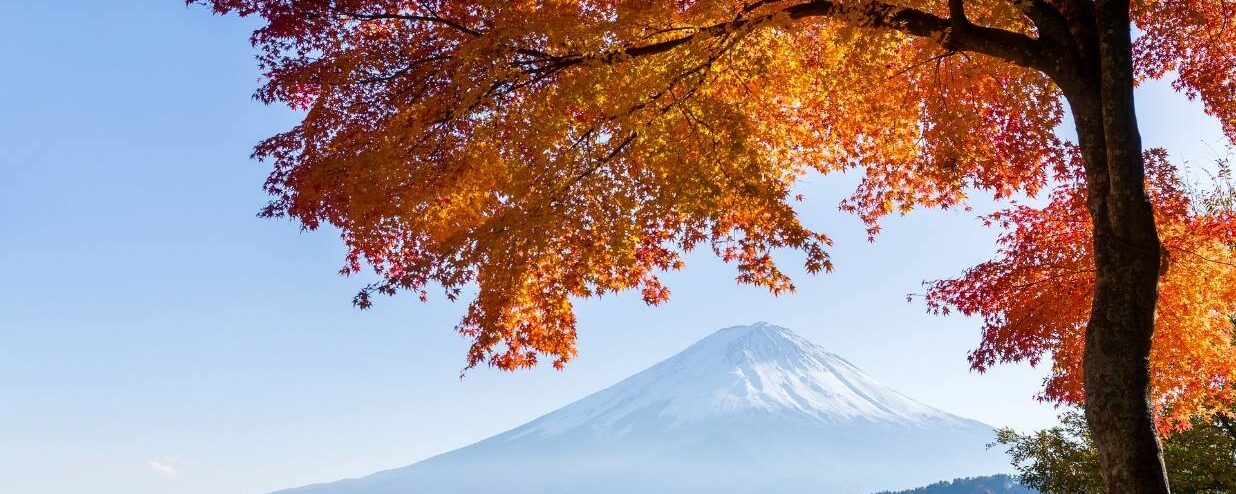As the weather cools and the Japanese landscape transforms into a colorful mosaic of golden ginkgo and red maple trees, what does Japan’s booming capital have in store for us? Tokyo in the fall is perhaps one of the best times to plan picnics or trips around the city, as the weather is just right (not too hot nor too cold). The autumn leaves blowing in the breeze against a backdrop of the cityscape is a sight to behold.
But when does autumn in Tokyo start and the leaves change to the vibrant hues of red, orange, and yellow? You may also be wondering where the best places are to absorb the autumn foliage. Let’s continue reading to find out everything you need to know about making the most of the fall season in Tokyo.
Is fall a good time to visit Tokyo?
Fall is one of the best times to visit or go out in Tokyo due to the mild weather and beautiful views. While the spring cherry blossoms might be the most popular image of Japan to outsiders, fall is arguably just as iconic with its beautiful multi-colored canopies. Since ancient times, the autumn foliage has been admired by the Japanese population just as much as the sakura trees were during Spring. But there are some things to keep in mind about visiting Tokyo during autumn.
Do you know about the four seasons in Japan? Read our blog to learn how to say winter, summer, spring, and autumn in Japanese!
Autumn allergies in Japan
Similar to spring, people with allergies to certain pollen may develop hay fever during the fall. However, unlike spring, which usually has high counts of cedar and cypress pollen, the allergy-inducing plants with the highest pollen count in fall include:
- Grasses
- Ragweed
- Mugwort
- Japanese hop
So, if you have allergies to pollen from the plants above, we highly recommend taking precautions to prevent or reduce hay fever symptoms. The most effective measures include wearing a mask, wearing a hat, and getting allergy medication from the local pharmacy in Japan.
When is fall in Tokyo?
The Fall season, or 秋 (aki), in Tokyo is generally from September to around the end of November or early December. However, noticeable changes of the fall season, such as the weather cooling down or the foliage changing color, can vary depending on the region, elevation, and climate. Tokyo temperatures cool down before the foliage changes color. By around mid-October, temperatures will start dropping. During the peak fall season, temperatures generally float around 18°C to 24°C.
What to wear during the fall season in Tokyo
As the temperature is relatively cooler compared to summer and even spring, wearing clothes for cooler weather is highly recommended. Also, keep in mind that areas higher in elevation, such as around Mt. Fuji, will be even cooler, so even warmer clothes would be better. Overall, we recommend wearing something like the following:
- Light sweaters, sweatshirts, blazers, or jackets
- Pants such as jeans or light leggings
- Light scarves
Once the weather cools down, the true colors of fall start to show, but when is the best time to make plans for appreciating the autumn leaves?
When can you view momiji in Tokyo?
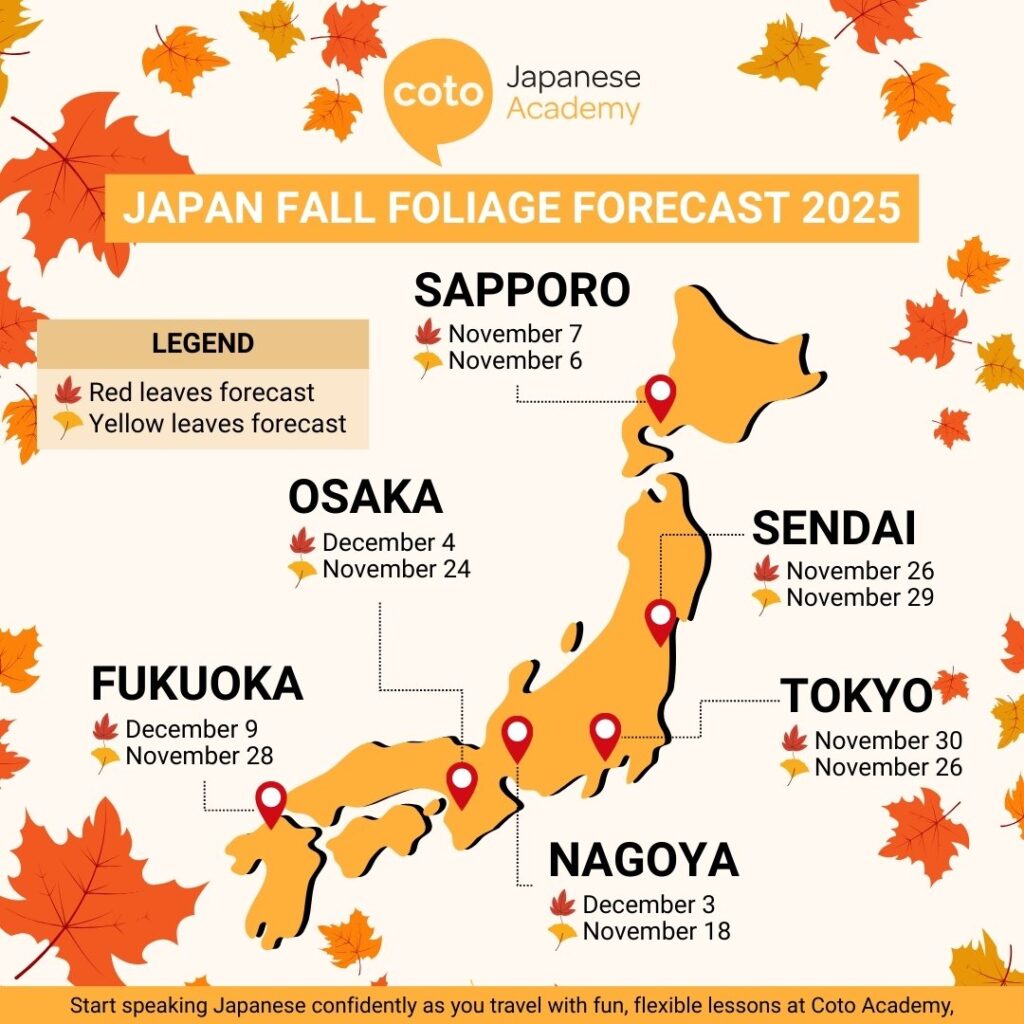
紅葉 (momiji) literally means “red leaves,” but when pronounced as koyo (yes, same kanji), it refers to all the colors of the iconic fall foliage. Based on the forecast map provided by the Japan Meteorological Corporation, the koyo or autumn canopies will have completely changed color by late November. So, it seems the peak season for the autumn foliage is around November 26 to 30.
However, the leaves may start changing to hues of yellow or orange before, even as far as a month or so. The foliage will change depending on when the weather cools down. In 2024, since the temperatures were substantially higher than average until November, the peak foliage was pushed back to late December.
Mid to late November is the highlight of Tokyo’s fall season, with the autumn leaves showcasing their full range of colors from bright yellows to deep reds. November is also the perfect season to go out on a cozy picnic due to the mild weather filled with colorful scenery. It’s also a great time to enjoy seasonal treats like roasted sweet potatoes (yaki-imo), chestnut desserts, or seasonal wagashi shaped like maple leaves.
Keep in mind these timelines work as a guideline for making plans; whether the foliage would have fully shifted to the vibrant autumn colors will vary year to year. For more details, check out our guide to the autumn foliage forecast.
Beyond the beautiful foliage, autumn is also festival season, with cultural parades, harvest celebrations, and even modern events like Halloween. Here is a guide to enjoying the season, month by month.
September Autumn Itinerary in Tokyo
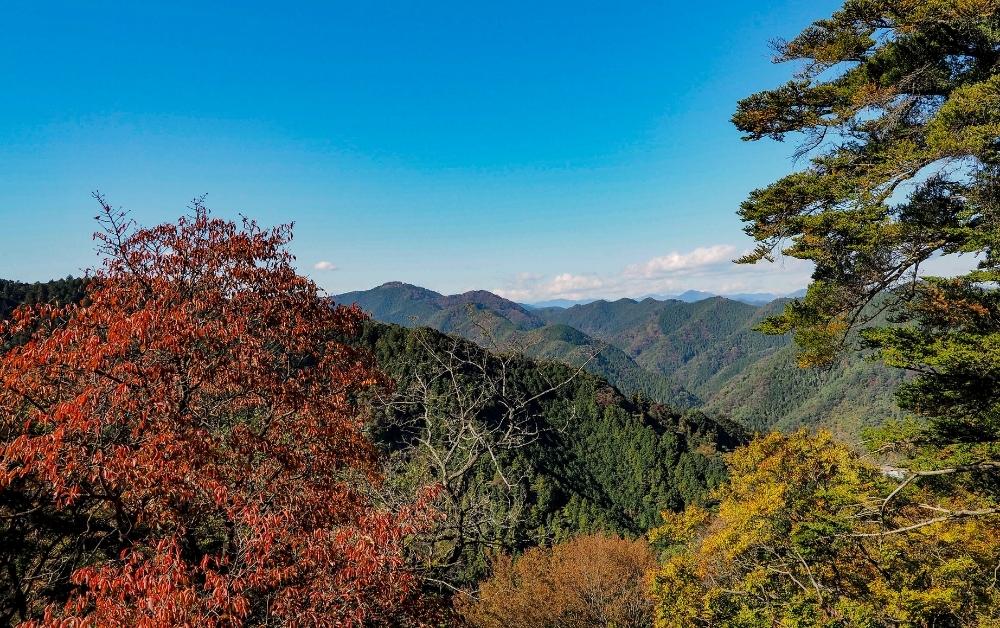
September is when the Fall season officially begins and summer ends, but this month still has some remaining summer-related festivals. The weather is still warm, but near the end, as the weather cools, you may witness the beginnings of the fall transformation.
1. Join Late Summer Fireworks & Festivals
Some of the last remaining summer festivals spill into early September. Hosted by Tokyo’s local shrines, you can find the iconic obon dances and summer-style matsuri featuring lively food stalls (yakisoba, takoyaki, kakigori), taiko performances, and even certain areas with fireworks. These festivals are perfect for easing into the cooler season and may even be preferable to the larger summer festivals in Tokyo that take place when the weather is still hot.
Festivals are held in various neighborhoods across Tokyo, such as:
- Tsurugaoka Hachimangu Reitaisai Festival in Kamakura
- Chofu City Fire Works
- Blue Note Jazz Festival
2. Tokyo Ramen Festa (東京ラーメンフェスタ)
Every year, Komazawa Olympic Park hosts the Tokyo Ramen Festa, the largest outdoor ramen event in the country. Over 30 stalls represent different regions of Japan, each serving their own specialty from Hokkaido’s famous miso ramen, to Kyushu’s rich tonkotsu (pork bone) broth, to lighter soy-based Tokyo-style bowls. Many shops create limited-edition bowls just for the festival, so even seasoned ramen lovers will discover something new.
The atmosphere is lively, with long rows of food tents, picnic seating, and plenty of locals and tourists alike. Since the event usually runs across two weeks, the lineup of ramen shops changes midway through, which means you can come twice to try even more flavors.
- Where: Komazawa Olympic Park, Setagaya
- Cost: Free entry, ramen bowls ~¥800 each
3. Take a Day Trip to Mount Takao (高尾山)
Located just an hour from Shinjuku, Mount Takao is one of the most popular quick retreats from Tokyo and one of the best places to see autumn colors close to the city. The mountain offers a wonderful mix of hiking trails, a cable car and chair lift, and even a temple (Yakuoin) halfway up, where visitors pray for good fortune.
In early autumn (late September – October), Takao is especially pleasant for hiking, with cooler temperatures and glimpses of red maples and golden ginkgo along the trails. By mid-to-late November, the foliage is at its peak, and the mountain is covered in a vibrant mosaic of colors.
For food lovers, the area is also famous for tenguyaki (a sweet, custard-filled pastry shaped like a mythical goblin mask) and tororo soba (buckwheat noodles topped with grated yam), perfect after a hike. On clear days, the summit offers sweeping views of Tokyo and sometimes even Mount Fuji in the distance.
- Where: Mount Takao, Hachioji
- Cost: Free hiking; cable car or chair lift ~¥490 one-way
October Autumn Itinerary in Tokyo
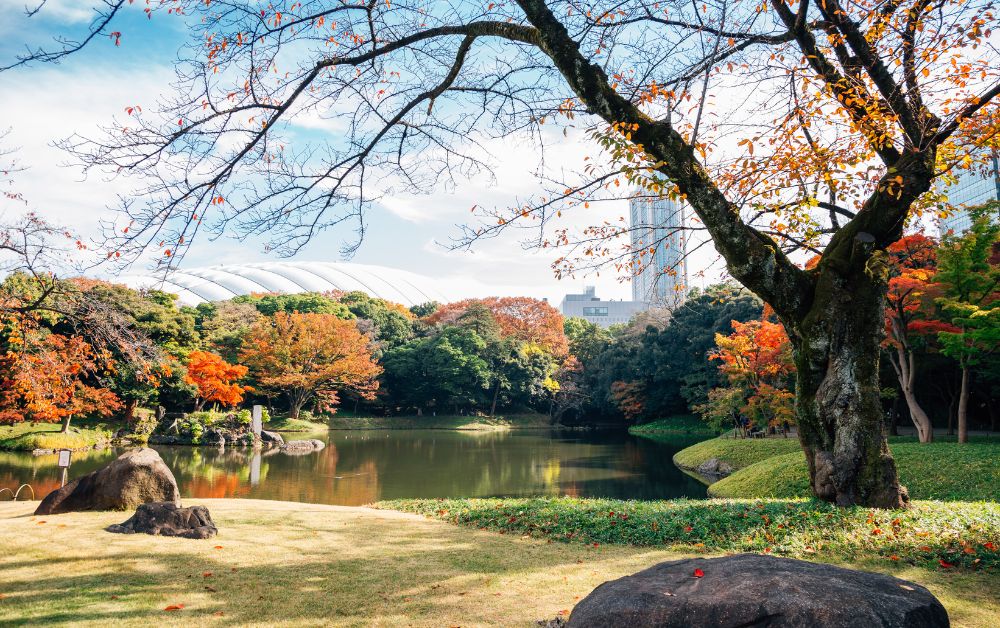
October is when the weather really gets cooler, usually settling at under 20°C, and the autumn foliage also starts to show up. In Tokyo, it’s not exactly at peak colors, but you will see the leaves changing to shades of yellows and oranges with occasional reds.
1. Tokyo Jidai Matsuri (東京時代祭)
Held in Asakusa, this “Festival of Historical Periods” celebrates Tokyo’s rich past. Locals parade in costumes from samurai warriors to Edo-period merchants, bringing history to life right before your eyes.
- When: Mid-October
- Where: Asakusa / Sensoji Temple area
- Cost: Free
2. Halloween in Tokyo
Halloween in Japan is truly a testament to Japan’s globalization, as the imported holiday with deep ties to Irish history can now be found throughout Tokyo at the end of October. What started as small gatherings has exploded into some of the largest Halloween celebrations in the world.
Halloween in Shibuya
Halloween in Shibuya is informally organized; there is no single event; rather, there are several Halloween events scattered across the city, with local bars and clubs often hosting costume contests. The streets are filled with people wearing extravagant costumes from cosplay to traditional horror-themed ensembles. The one thing to keep in mind is that the streets get very crowded on Halloween night. The mayor has actually discouraged people from going to Shibuya for Halloween out of safety concerns.
Due to this, rules around pedestrian walking paths and alcoholic beverage services have become much stricter. Now with the Mayor’s announcement, there might be much less turnout this year. So, it might be better and safer to seek out other alternatives this Halloween.
- When: October 31
- Where: Throughout Shibuya
- Cost: Free
Halloween in Ikebukuro
You can also attend the Ikebukuro Halloween Cosplay Festival, or Ikehalo, where thousands of people fill the streets dressed up as their favorite anime or manga character. The event also features exhibition booths, stage events, parades, and photography services. This is one of the biggest Halloween events in Tokyo, where you can gather with your friends dressed as your favorite characters while enjoying the festivities.
- When: October 31
- Where: Ikebukuro Area
- Cost: ¥2700 (general); ¥3800 (premium)
3. First Views of Autumn Leaves
By late October, Tokyo starts turning golden and red, especially in gardens and parks. While not the peak season, the trees at parks are already starting to transform, painting the natural canvas with hues of greens, yellows, and reds (if you can find them). October is a great time for a stroll around the park, and here are the top recommendations:
Showa Kinen Park (昭和記念公園)
One of the largest parks in the Tokyo area, Showa Kinen Park in Tachikawa, is a must-visit in autumn. Its 300-meter ginkgo avenue is the star attraction, where rows of golden trees form a glowing tunnel perfect for photography. The park also has sprawling lawns, ponds, and Japanese gardens, making it a great all-day outing. Seasonal flower fields (like cosmos in October) add another layer of beauty. Because of its size, it never feels too crowded, even on weekends.
- Where: Showa Kinen Park, Tachikawa (~40 min from Shinjuku by train)
- Cost: ¥450 entry
Koishikawa Korakuen (小石川後楽園)
Dating back to the early Edo period, Koishikawa Korakuen is one of Tokyo’s oldest and most elegant landscape gardens. Designed with Chinese and Japanese aesthetics in mind, it recreates famous scenery from across East Asia in miniature form, from lakes and stone bridges to wooded hills. In autumn, the garden comes alive with vibrant maples and ginkgo trees reflecting in the central pond, creating a painterly scene straight out of a scroll painting. Its calm, historic atmosphere makes it an oasis from the city.
- Where: Koishikawa Korakuen (near Iidabashi Station)
- Cost: ¥300 entry
Mt. Mitake in Okutama
Located on the outskirts, Northwest of Tokyo, Mt. Mitake in Okutama provides a scenic and serene getaway from the bustling city. At only a couple of hours away, the autumn foliage starts to reveal itself a bit earlier up in the mountains. You can admire the colorful leaves, reflecting off Lake Okutama or with the blue waters of the Tamagawa River in the background. You can also immerse yourself in the Koyo (紅葉) while walking on the hiking trails. Okutama is one of the places to soak in the Autumn scenery.
- Where: Mitakesan, Ome, Tokyo
- Cost: Free
November Autumn Itinerary in Tokyo
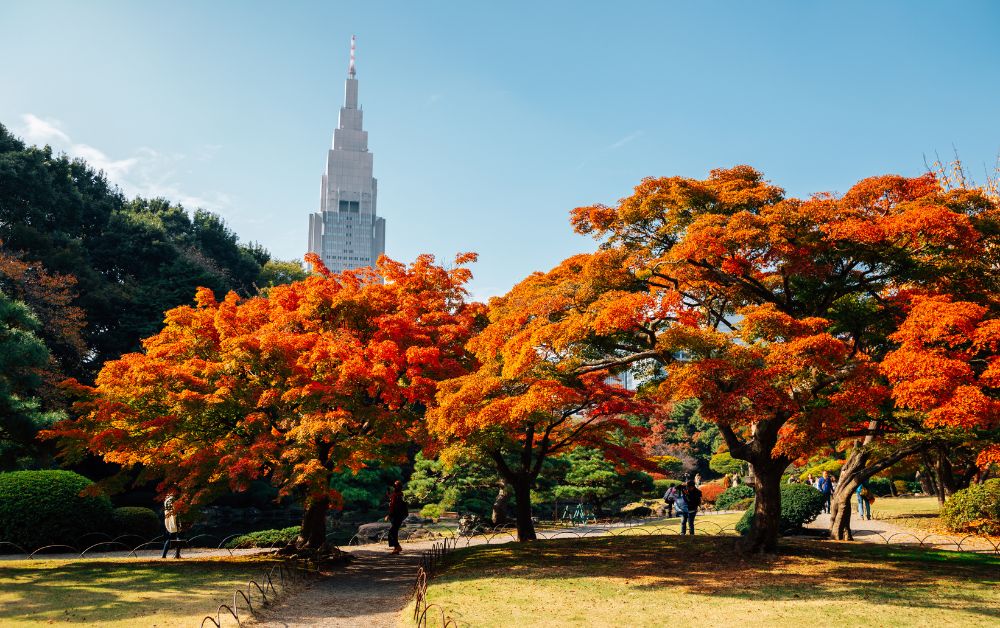
November is the peak season for autumn foliage in Tokyo, with leaves from maple and gingko trees showcasing the full range of colors. The weather is much cooler, so when going out, light jackets or sweaters are recommended.
1. Head to Rikugien Garden (六義園)
Often considered one of Tokyo’s most beautiful landscape gardens, Rikugien is especially famous for its nighttime autumn illuminations. From late November through early December, the garden stays open after dark, and its red and golden maples are reflected in the central pond, glowing under carefully placed spotlights. The garden itself dates back to the Edo period (1702), designed as a strolling garden with paths leading to seasonal “viewing spots.” In autumn, it feels like walking through a living painting.
- Where: Rikugien Garden, Bunkyo, Tokyo
- Cost: ¥300 entry
2. Visit Shinjuku Gyoen (新宿御苑)
A vast garden right in the heart of the city, Shinjuku Gyoen offers one of Tokyo’s most diverse autumn landscapes. The park blends Japanese, English, and French-style gardens, creating different atmospheres as you stroll through. Wide lawns framed by gingko and maple trees make for sweeping golden-red vistas, while more intimate corners feel peaceful and secluded. Because of its size, the foliage season here lasts longer than at smaller gardens, making it a reliable spot for autumn viewing even into early December.
- Where: Shinjuku Gyoen, Shinjuku, Tokyo
- Cost: ¥500 entry
3. Autumn Viewing in Inokashira Park (井の頭恩賜公園)
Beloved by locals in Kichijoji, Inokashira Park has a romantic and cozy feel in autumn. Its central pond, surrounded by bright red maples and golden gingko trees, creates one of Tokyo’s most photogenic seasonal scenes. Visitors can even rent rowboats or swan-shaped pedal boats to admire the colors from the water, a great activity for a date. The relaxed, artsy vibe of nearby Kichijoji (with its cafes and boutique shops) makes this an ideal spot for combining nature, culture, and a laid-back afternoon.
- Where: Inokashira Park, Kichijoji, Tokyo
- Cost: Free
4. Celebrate Shichi-Go-San (七五三)
On November 15, families celebrate children aged 3, 5, and 7 with shrine visits. At Meiji Jingu or Hie Shrine, you’ll see kids in adorable kimonos being photographed with their families in front of the iconic temples and the iconic backdrop of autumn foliage. This is a uniquely beautiful and heartwarming tradition that is great for families with kids ages 3, 5, and 7.
- Where: Meiji Jingu Shrine or Hie Shrine
- Cost: Free
Seasonal autumn flavors to try in Japan
As the weather cools down from the piping hot summers, certain fall fruits and vegetables are in season. So what seasonal delicacies or hearty foods should we be on the lookout for? With the season allowing for certain hearty fruits and vegetables to thrive, different fall dishes become widely available across the country. We will just introduce a few to get you started, but check the complete guide to autumn flavors in Japan on our blog.
1. Yakiimo (焼き芋)
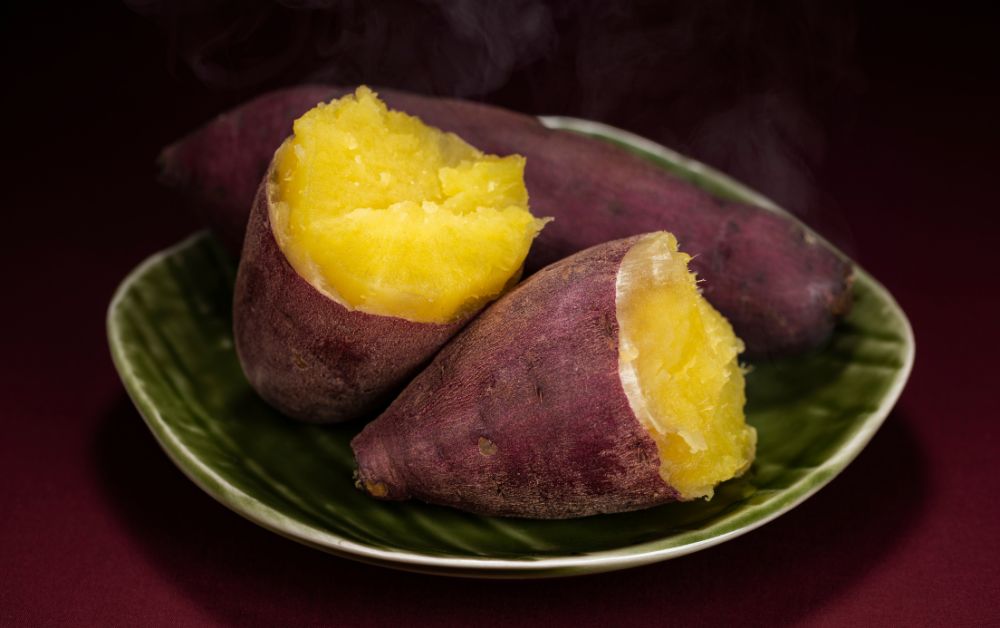
Sweet potatoes thrive in the milder weather, resulting in a plethora of food trucks, markets, and even discount stores serving 焼き芋 (yakiimo), or roasted sweet potatoes. They are known for their sweet aroma and sweet creamy texture that goes well with butter or even salt and pepper. They are purple and usually yellow on the inside. You can find yakiimo being served freshly roasted or used as the main ingredient in a variety of pastries.
2. Persimmons or Kaki (柿)
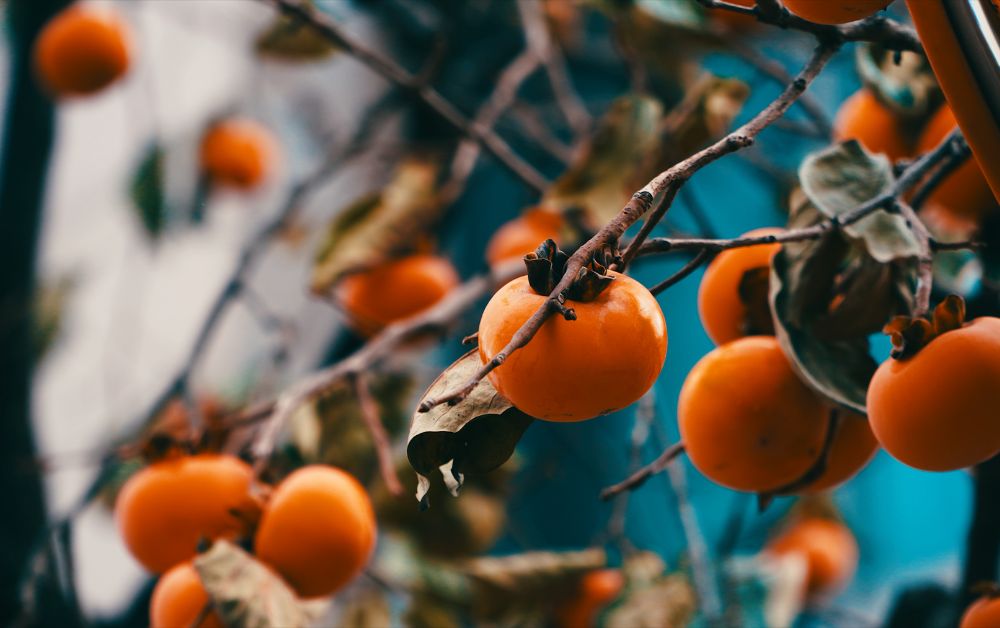
Kaki are a popular seasonal fruit in Japan known for the sweet, soft, and jelly-like flesh when ripe. They are orange in color and almost resemble a tomato. They are actually often eaten raw, but can be made into seasonal pastries or made into a jam.
3. Apples or Ringo (りんご)
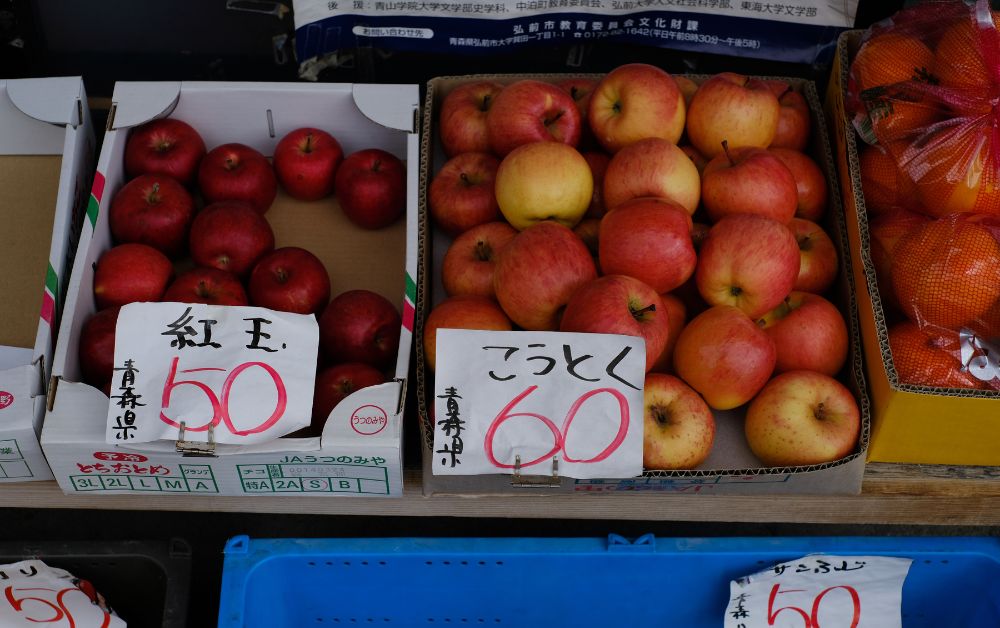
This wonderfully juicy, sweet, and crispy fruit likely needs no introduction. While they are usually available all year long, they thrive in autumn, so they are even more widely available and perhaps cheaper. During the fall, you’ll see convenience stores and supermarkets in Tokyo selling fresh apples on a much larger scale. Plus, cafes and restaurants will also serve mouth-watering seasonal pastries using this delectable fruit.
4. Chestnuts or Kuri (栗)
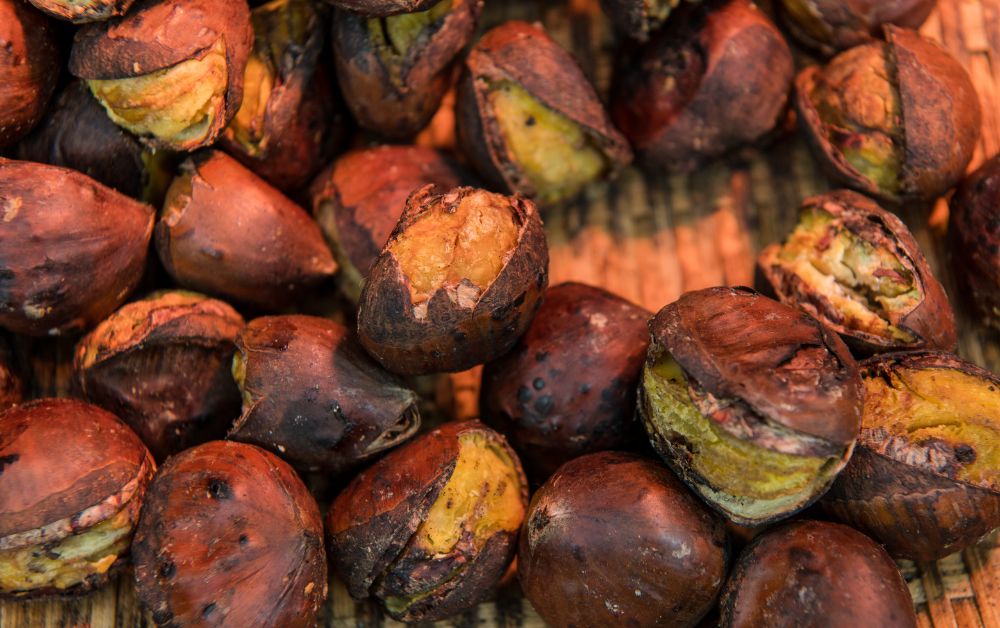
Chestnuts can be featured in both sweet and savory dishes. Especially during the fall season, you can find them roasted whole in markets or at street stalls. They are sometimes added to rice, which is called 栗ご飯 (kuri-gohan). Most cafes and bakeries across Tokyo and Japan will make wonderful pastries that are sweet with nutty and earthy flavor profiles.
Do you have food allergies? To learn what you need to look out for, read our blog on how to read food and nutrition labels.
Enjoy Full Autumn in Japan by Learning Japanese at Coto Academy!
Autumn in Tokyo, with the foliage accompanying the cityscape, is just as beautiful and iconic as sakura in spring. Whether you’re savoring ramen in September, enjoying historical parades in October, or walking through glowing maple gardens in November, there is something for everyone.
The best way to experience fall in Tokyo is to know Japanese, to order chestnut treats, or to walk with your friends among the fall foliage. For practical, conversation-based lessons, check out Japanese courses here at Coto Academy! As the No. 1 Japanese language school, we offer intensive Japanese courses as well as part-time options, so whether you want to immerse yourself fully or fit lessons into a busy schedule, there’s something for you. Start your journey to speaking Japanese confidently today!
Why join Coto Academy?
- Over 60+ different Japanese classes over 18 levels
- Small classroom of only up to 8 students for personalized support
- Professional, native Japanese teachers
FAQ
When is the best time to see autumn leaves in Tokyo?
Peak foliage in Tokyo usually falls between mid-November and early December, though some spots like Mount Takao and Nikko start earlier in late October.
Do I need to pay to enter Tokyo’s autumn gardens and parks?
Many public parks, like Inokashira Park, are free, but traditional gardens such as Shinjuku Gyoen (¥500), Rikugien (¥300), and Koishikawa Korakuen (¥300) charge a small entry fee.
What should I wear for fall activities in Tokyo?
Layers are best. September can still be warm, but by November you’ll want a light jacket for evenings, especially if you’re attending night illuminations or fireworks.
Are Tokyo’s fall festivals free to attend?
Most festivals (like Tokyo Ramen Festa) have free entry, though you’ll pay for food, drinks, or attractions. Expect ramen bowls to cost around ¥800.
Can I take a day trip from Tokyo to see more autumn leaves?
Yes! Popular getaways include Mount Takao (1 hour from Shinjuku), Nikko (2 hours), and Hakone (90 minutes). These spots often peak earlier than central Tokyo, making them great options for October leaf-viewing.
